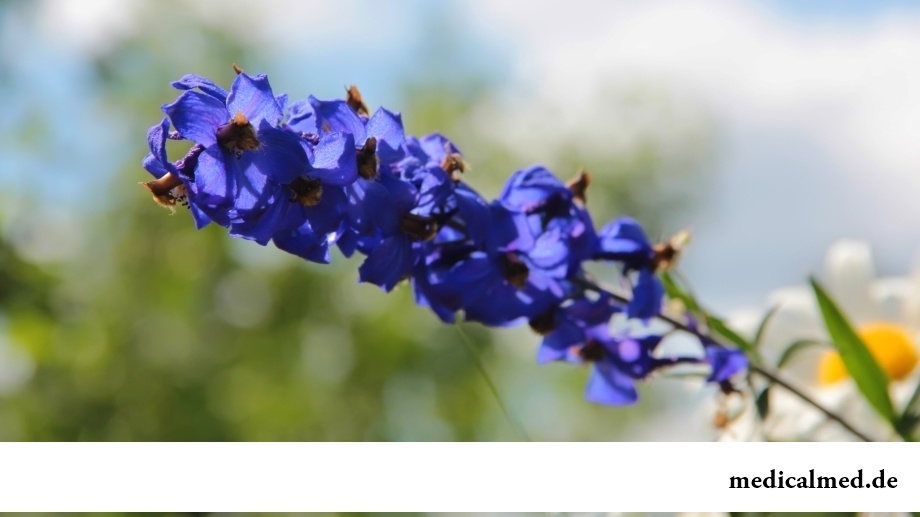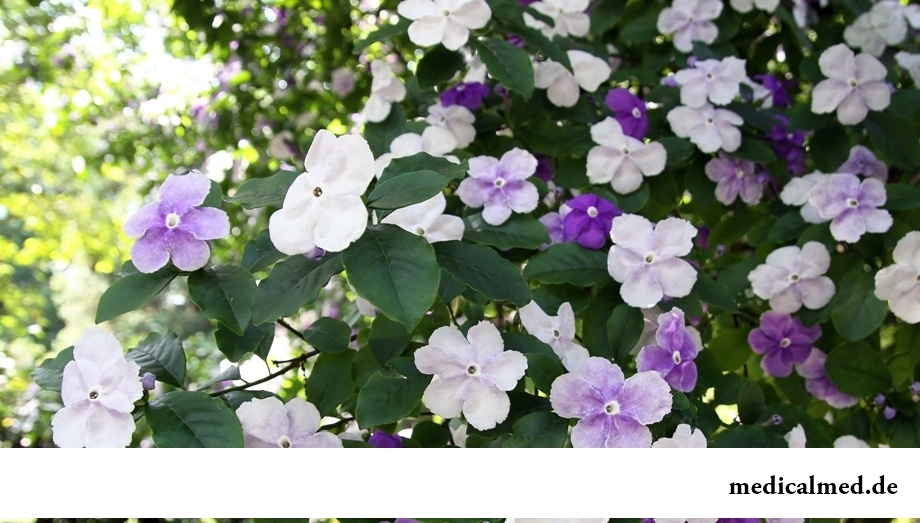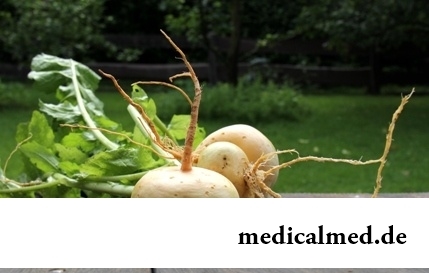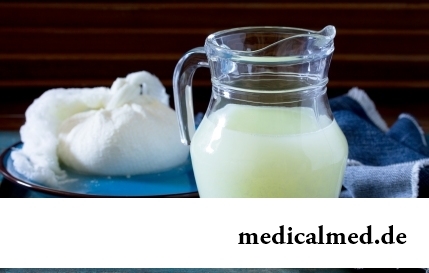





Noxious plants in the room, at the dacha and in the wood
It is impossible to imagine human life in which there would be no plants. Practically in each apartment and any production room there are window plants, millions of people with pleasure are engaged in gardening and truck farming, many citizens spend free time on seasonal dachas. However we very seldom pay attention to those properties of our green pets who can make the neighbourhood with them unpleasant and even unsafe.

The most dangerous cultivated plants
The mankind owns information that many plants contain noxious to health substances many centuries. Poisons of a plant origin can cause severe poisonings, damages of skin and mucous or oppression of respiratory function. Such substances are especially dangerous to the small children and people having chronic diseases. Among the flowers and bushes which are found in our gardens and apartments, the most serious fears have to cause the following plants:
- Families of a nightshade family. These are various decorative pepper, a nightshade lozhnoperechny, a brunfelsiya, a brovalliya, a brugmansiya, a solandra and many others. Bright, attractive fruits give them special decorative effect. However beautiful berries are it is impossible. They, as well as leaves of all these plants, contain alkaloid the solanine causing serious damages to a nervous system at the person. Treat family of a nightshade family both a dope ordinary, and a henbane (belladonna), possessing similar action;
- Families of a crowfoot family. That the wild buttercup known also as "night blindness", is poisonous, know many. But not all gardeners are informed that his close relatives who with such pride are grown up on seasonal dachas can constitute health hazard too. These are very popular krasivotsvetushchy plants a delphinium (delphinium), monk's-hood (fighter), ранункулюс, a lumbago, an aquilegia, an anemony and others. All parts of a crowfoot family are poisonous. The leaflet which accidentally got to food can provoke a headache, suffocation and even spasms. The smell of fragrant kinds of a delphinium causes the symptoms similar to signs of heavy intoxication. Monk's-hood in medieval Europe was considered as a source of so strong poison that the person in whom found a rhizome of this plant in some countries was subject to an execution without court as the potential poisoner. In a consolation modern flower growers need to note that the monk's-hood cultivars (which are especially zoned for zones with cool climate), it is much safer than the wild-growing ancestors;
- Families of a dogbane family to which belong an oleander, Rauwolfia, катарантус, пахиподиум, адениум (a desert rose), a periwinkle pink. The substances which are contained in these plants oppress cordial activity;
- Families of a spurge family. Widespread houseplants (different types of euphorbias, a codiaeum, a chenille plant, a poinsettia) emit the lacteal juice capable to cause damages of skin from small irritation to the real burns;
- Are also dangerous by Aroidnye (a monstera, a dieffenbachia, a philodendron, a calla) because of juice which follows in places of damage of a stalk and leaves. The accidental contact of this liquid with mucous a mouth or a throat causes serious hypostasis, and at its hit in eyes there is conjunctivitis;
- Amarillisovye, widely presented by garden and room types. Kliviya, Hippeastrums, zefirantusa, and also our favourite bulbous primroses – narcissuses, tulips and hyacinths concern to this family. The bouquets made of their fragrant versions do not recommend to put in a bedroom, in order to avoid developing of a severe headache. Accidental hit of leaves amarillisovy in food causes vomiting and a diarrhea.
Also such adornment herbaceous plants as a castor-bean tree, a hydrangea, a honeysuckle a sweet honeysuckle (its bright orange fruits are especially poisonous), a petunia, an ivy, an iris, a groundsel, a sweet pea contain substances, dangerous to the person.

From bushes it is worth mentioning an euonymus which fruits work as the strongest emetic and laxative, a snowberry and a yew – a beautiful ephedra which all parts can cause not only a digestive disturbance, but also interruptions in cardiac performance.
Plants which you should not touch in the field and in the wood
Certainly, adults seldom become victims of poisoning garden or houseplants, but the risk of such troubles for children is quite high. It is especially urgent when kids get on the nature. If we control species composition of the plants living on our garden sites and in apartments, then on walk in the wood we can face poisonous wild plants, sometimes more dangerous, than their cultural fellows. Therefore vacationers have to observe some precautionary measures:
- Being on a meadow or in the wood, it is not necessary to smell and pick those flowers which you see for the first time. You should not collect and bring home big bouquets, especially if they are made of the plants having strong aroma;
- It is necessary to look attentively for children. The small in general cannot be released from themselves, and to children is more senior it is necessary to explain that they did not tear any berries at all, without having shown them to adults. At the end of summer in the wood fruits of a lily of the valley, a daphne, a vorony eye, a Solomon's seal and some other plants ripen. Even in the minimum quantities they can cause the serious poisoning fraught with the most sad effects;
- It is worth steering clear of a cow-parsnip which very often meets on small meadows and forest edges. At contact with its leaves on skin of the person the juice possessing the corroding action gets. The burns caused by cow-parsnip juice are very painful, and pollen of this plant at inhalation causes hypostases of a mucous nasopharynx and throat;
- It is better not to tear and not to allow to touch to children such widespread plants as a celandine, elder, a water hemlock, a wild radish, a buttercup and a bindweed.
Going to the nature, it is necessary to remember that nobody will take care of your safety better, than you are. Therefore it is worth finding previously information on local noxious plants and to get acquainted with their images to avoid problems with health in the future.
Work which to the person not to liking, is much more harmful to his mentality, than lack of work in general.

Any of us is not insured from a heavy illness of the loved one. Happens and so that someone from family members becomes lying бо...
Section: Articles about health
You heard that laughter prolongs life? Researchers did not manage to establish longevity direct link with sincere fun yet, but several facts confirming beneficial influence of risibility on the state of health are clinically proved....
Section: Articles about health
All the known slogan "Protect Men!" arose not from scratch. In a sense, the nature created men much less adapted for vital disorders, than it seems at first sight. Statistically, men are ill more often, than women, have the majority of illnesses heavier and earlier die. The situation is aggravated with the fact that our fathers, husbands, brothers and sons are not always inclined to care for the health. Partly it happens because of unwillingness of t...
Section: Articles about health
For many spouses the question of planning of a family is one of the main. The choice problem effect at the same time comes out on top...
Section: Articles about health
The stroke is one of the most widespread diseases of the person, annually in the world about 6 million cases of this pathology are registered. According to medical statistics, strokes occur almost three times more often than myocardial infarctions. Disease otno...
Section: Articles about health
One of the useful properties presented to the person by the nature is ability to feel fear. This ability is designed to signal about approach of a dangerous situation and to help to avoid in advance it to keep life. However if the fear is persuasive and is not reasonable, it can seriously limit possibilities of the person in respect of socialization and self-realization. Such pathological fear is called a phobia....
Section: Articles about health
Turnip, radish, horse-radish – once these and other products enjoyed wide popularity at our ancestors, being not only food, N...
Section: Articles about health
Color of plants is caused by presence at them of certain chemical compounds. Let's talk about what is meant by various colors of vegetables and fruit and what properties they give them....
Section: Articles about health
Milk and products of its processing by right occupy one of the main places in a diet of the modern person. They contain proteins, necessary for normal life activity, fats, vitamins and microelements, and are an important part of various medical diets....
Section: Articles about health
Coffee - the tonic loved by many for the invigorating aroma and deep taste. Having the stimulating effect, coffee raises ра...
Section: Articles about health
History of mankind contains several tens of epidemics whose emergence was compared by eyewitnesses and historians to doomsday. The most terrible of them claimed the lives of millions of people, having made even the whole people to the person of the earth. What they − the diseases striking terror? Daringly...
Section: Articles about health
Helminthosis is one of the most widespread diseases. Statistically, any species of helminths infected every third inhabitant of the planet. Most of specialists even consider these data strongly underestimated: some uninvited "cohabitants" do not cause the carriers serious troubles, and patients just do not see doctors. The situation is aggravated also with the fact that people know about specifics of similar illnesses very little. At many presence of worms is strong ассоциир...
Section: Articles about health
More than a half of the married couples which faced prostatitis – leave. The new broadcast "Female View of Prostatitis" will help to learn...
Section: Articles about health
The immunity role in growth of the child is invaluable. The proteins-immunoglobulins produced by immune system preserve the child against the diseases capable − owing to an organism weak still − to serve as a stressful factor, to become the reason of many complications and delays in unless...
Section: Articles about health
People know that thermal sources have salutary force long ago. Treatment by natural waters is one of the most ancient methods of disposal of the most different diseases. Bathtubs, souls, wrappings and inhalations, in combination with water reception inside help to improve a condition of the patients suffering from disturbances of work of a musculoskeletal system, bodies of digestive tract, cardiovascular, nervous, respiratory and secretory system, skin and endocrine п...
Section: Articles about health
The number of long-livers is very small. One person from 5 thousand lives up to age of 90 years, and the centenary boundary steps only about...
Section: Articles about health
Contrary to popular belief, the multiple sclerosis (MS) is not connected neither with sclerous changes of walls of vessels, nor with age forgetfulness and problems with concentration of attention. This disease has the autoimmune nature. Pathological process of a vyrazh...
Section: Articles about health
Impossibility to conceive the child – a trouble of many Russian families. During quite long time was considered that main "culprits" of troubles such are women. Modern physicians claim that the situation is different: about a half of failures in attempts of reproduction are connected with male infertility....
Section: Articles about health
Each person knows that fervescence is an illness sign. However about existence of diseases can to suite...
Section: Articles about health
The phenomenon of the panic attack is known long ago, but the reasons of its emergence still are up to the end not found out. It is established that more than 30% of people at least once in life become the victims of very unpleasant phenomenon: without everyones on that the reasons they have a feeling of horror, with...
Section: Articles about health
White teeth and the Hollywood smile – a dream of many people. Long time was considered that the plaque on teeth and change of their color – destiny of those who incorrectly eat smokes and badly brushes teeth. But the paradox is available: at everything the variety of toothpastes, brushes existing today for toothbrushing and conditioners for a mouth the number of the people hesitating of a plaque on teeth does not decrease. Moreover, the plaque is formed even at small children who definitely do not smoke and have no coffee. So in what business, and опас...
Section: Articles about health
From the failure of work of immune system which is shown in the form of an allergy, statistically, more than 40% of the population of the globe suffer. In большинс...
Section: Articles about health
Residents of big cities quite often have a disease which is known as the syndrome of chronic fatigue (SCF) today. This illness affects the people belonging to various social and demographic groups and living on all continents. Most of all SHU to a podverzha...
Section: Articles about health
For the time being the perspective of heart diseases seems to most of people remote and foggy. But sooner or later practically each adult faces extremely unpleasant feelings: sudden stethalgia. To be consoled at this time in a thought of what for a heart attack still early, will hardly turn out: if the person is impressionable, he, as a rule, has feeling of panic and fear of fast death. And meanwhile, it is very often possible to confuse pains with cardiac pains невралгическог...
Section: Articles about health
For most of the working people the problem of having a snack is particularly acute enough. Sooner or later there is a question: what is possible quickly for a sja...
Section: Articles about health
A little more than a century ago goat milk was a traditional food stuff of most of Russians. Unfortunately, today on tables of our compatriots it appears extremely seldom. The reason that the use of so useful product practically descended on...
Section: Articles about health
The fatigue, sleep debt, disturbances of food, bad mood, vagaries of the weather – all these circumstances badly affect our appearance. Especially the person suffers: skin becomes flabby, loses healthy color, becomes covered by wrinkles, zones of hypostases and dark circles under eyes appear. It is not always possible to be saved from influence of aggressive factors, but we are quite able to minimize its effects. For this purpose usually apply the cosmetics and procedures helping увлаж...
Section: Articles about health
